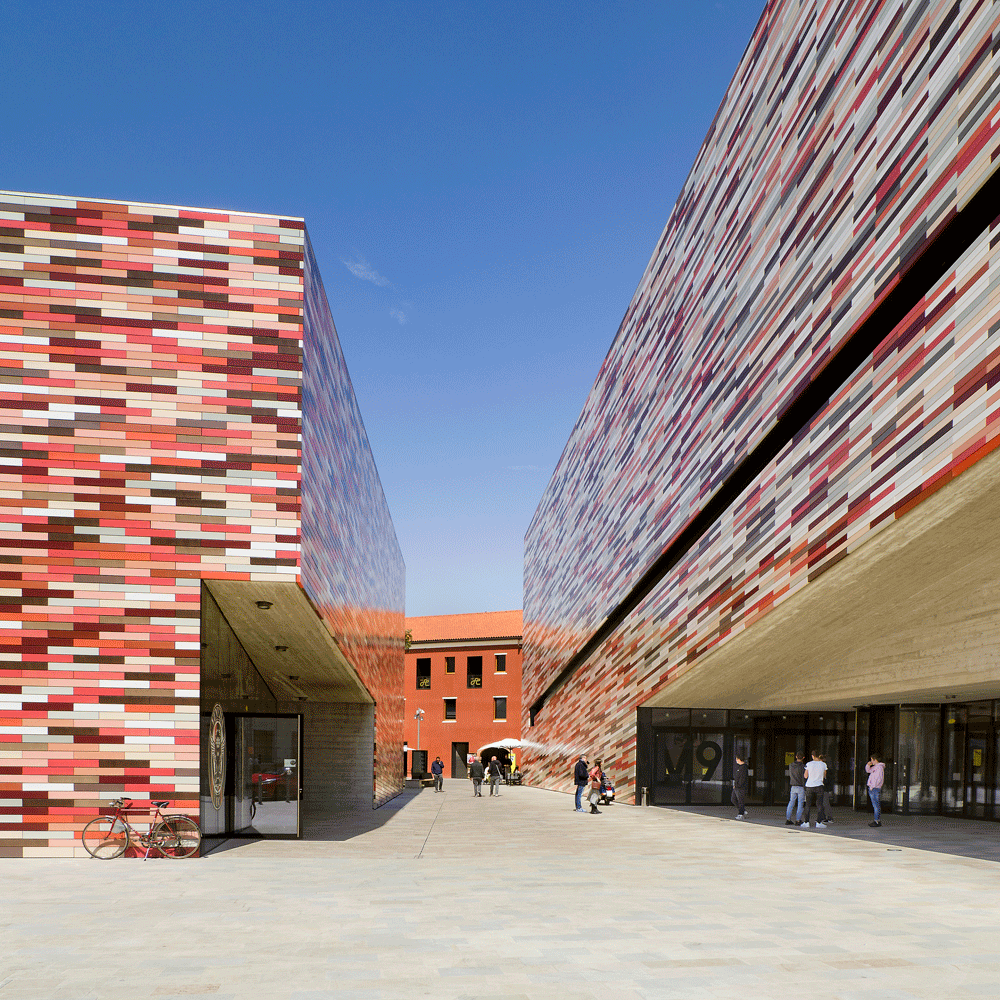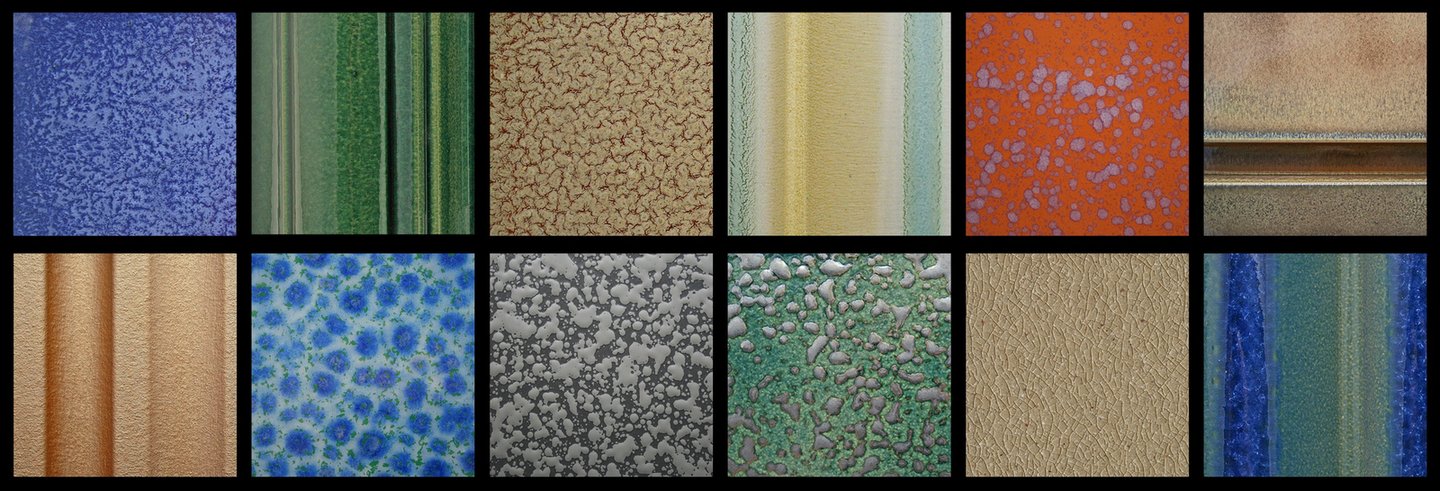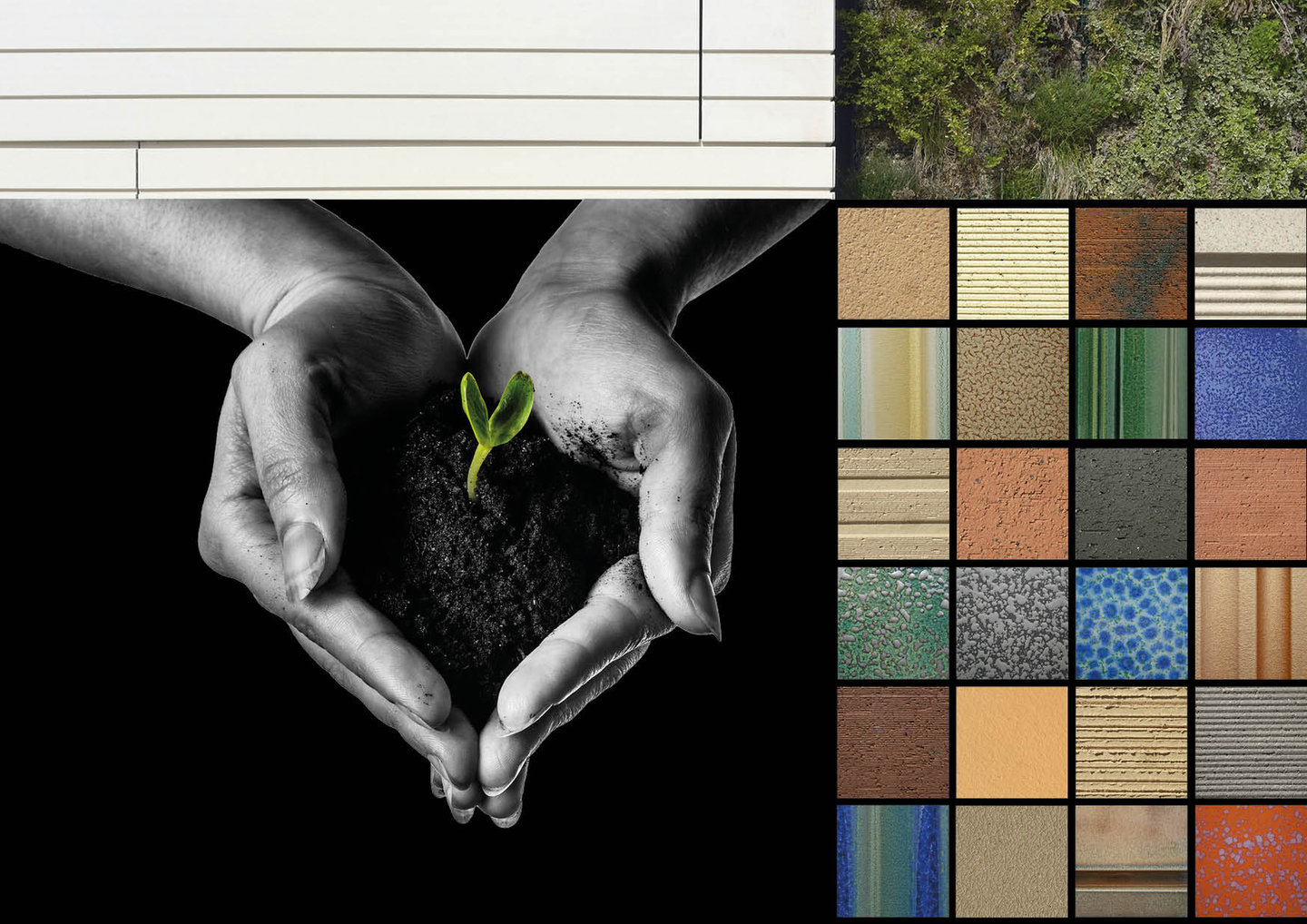‘Architecture is the learned game, correct and magnificent, of forms assembled in the light.’
This quote from Le Corbusier refers to the interaction of light and material, which is central to the appearance of a building. In addition to the shape of a building, the exterior appearance is governed to a great extent by the materials, structures and colours, which, in their interplay with light, provoke powerful sensory impressions. And it is this perception, this expressiveness, this vibrancy that outstanding architecture aims to achieve. The exterior creates an instant impact on the observer, underscores specific characteristics and qualities of the building and communicates values to the outside world. As such, it fulfils more than merely a functional role.
Paracelsusbad, Salzburg, Austria © Christian Richters
Scroll down to find out more
The materials chosen and how they are deployed dictates whether the intended impression – that being a building that is unique and unmistakeable – is achieved. When it comes to expressiveness, aesthetics, versatility and variability, terracotta proves time and again to be the perfect basis for producing eye-catching effects and deliberate, carefully chosen highlights. The power of colours, surface textures and different profiles is dramatically enhanced through exposure to light, especially the light that strikes a shining surface. After all, this sets the stage for a play of reflections, the perceptions of colours and their intensities change, new dimensions and depths are revealed – in short, the surfaces come alive. The finishing glaze – the application of which is regarded by manufacturers of façade ceramics as the ‘supreme discipline’ – creates the projection screen on which this extraordinary spectacle of brilliance and luminous intensity plays out.
M9 Museum, Mestre-Venezia, Italy © Klaus Brandes

The materials chosen and how they are deployed dictates whether the intended impression – that being a building that is unique and unmistakeable – is achieved. When it comes to expressiveness, aesthetics, versatility and variability, terracotta proves time and again to be the perfect basis for producing eye-catching effects and deliberate, carefully chosen highlights. The power of colours, surface textures and different profiles is dramatically enhanced through exposure to light, especially the light that strikes a shining surface. After all, this sets the stage for a play of reflections, the perceptions of colours and their intensities change, new dimensions and depths are revealed – in short, the surfaces come alive. The finishing glaze – the application of which is regarded by manufacturers of façade ceramics as the ‘supreme discipline’ – creates the projection screen on which this extraordinary spectacle of brilliance and luminous intensity plays out.
M9 Museum, Mestre-Venezia, Italy © Klaus Brandes
St. Albans Place, Leeds, UK © Will Price
UTM North, Toronto, Canada © Lisa Logan
The glaze gives planners and designers an additional element allowing them to create exclusive and exciting façades. Whether transparent or opaque, matte or high-gloss, whether in pastel shades, vibrant colours or with a metallic quality – the range of possibilities is almost endless and is being constantly optimised thanks to manufacturing-related improvements. New standards are also being set by the double-firing technique, which involves cutting the body after the first firing process and then, in a second firing process, finishing it with an edge glaze to add an extra design detail.
Further enhancements can be achieved with special glazing effects. The addition of extra dye, metal or pigment components lends the surface an unmistakeable, detail-rich appearance designed to achieve a very specific impact. Depending on the amount of extra material added and the firing technique, the enriched glaze forms randomly distributed inclusions, dotting patterns and speckling effects and develops new textures and colour schemes, all of which combine to create a truly unique façade. In this way, architects can implement an almost infinite number of ideas and concepts and use the façade as a showcase for their artistry.

Terracotta not only opens up whole new design potential that can be continuously enhanced and refined through creative research and development, but is also an eco-friendly and sustainable building material that is especially relevant in these times of growing environmental awareness. To fulfil its duty towards human health and the environment, NBK – as one of the leading manufacturers of ceramic façades – now produces all of its glazes using lead-free formulations.

Terracotta not only opens up whole new design potential that can be continuously enhanced and refined through creative research and development, but is also an eco-friendly and sustainable building material that is especially relevant in these times of growing environmental awareness. To fulfil its duty towards human health and the environment, NBK – as one of the leading manufacturers of ceramic façades – now produces all of its glazes using lead-free formulations.
Contact Us
NBK Keramik GmbH
Reeser Straße 235
D - 46446 Emmerich am Rhein
Tel: +49 (0) 28 22 - 81 11 - 0
Fax: +49 (0) 28 22 - 81 11 - 20
Email: info@nbk.de
Go to top
